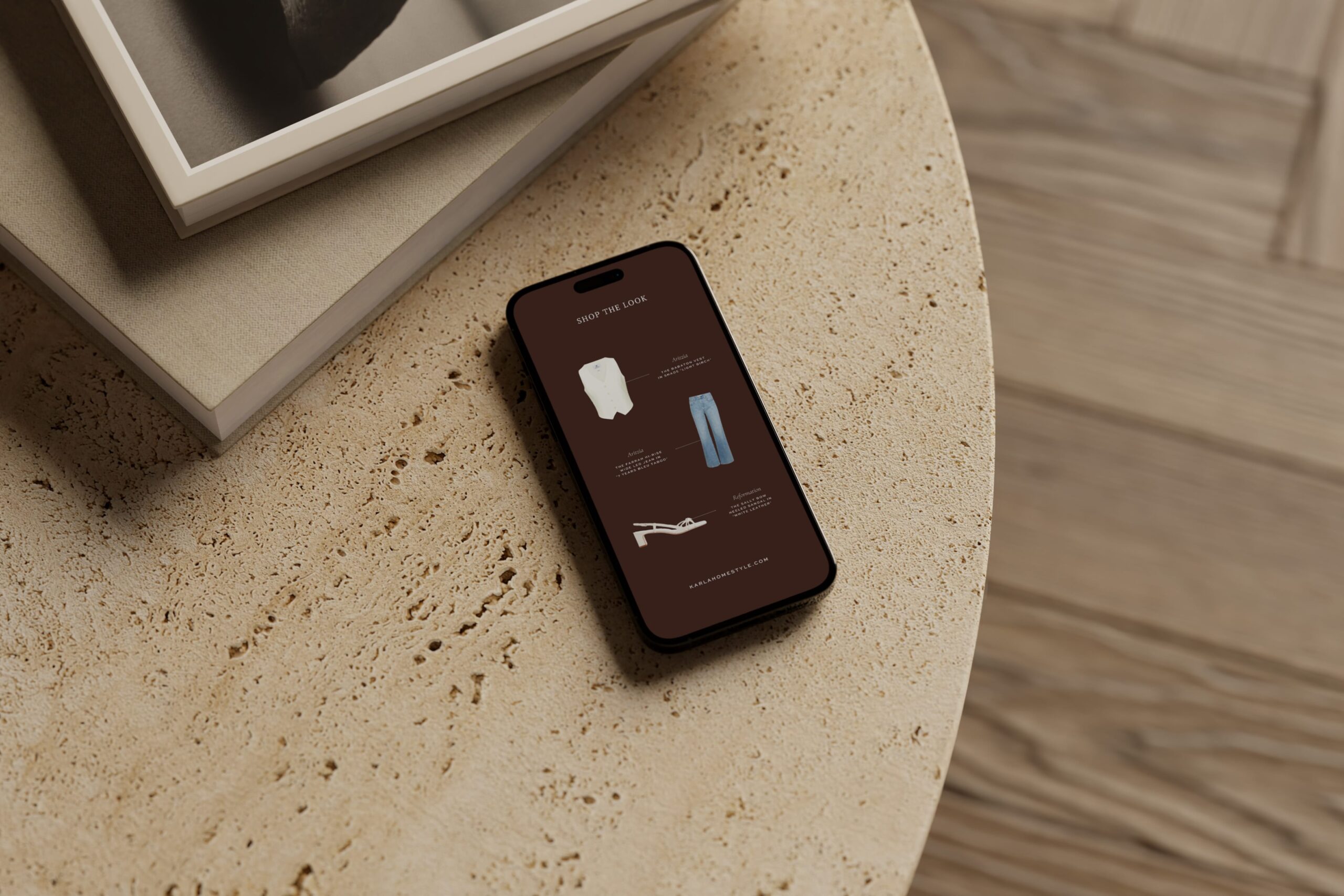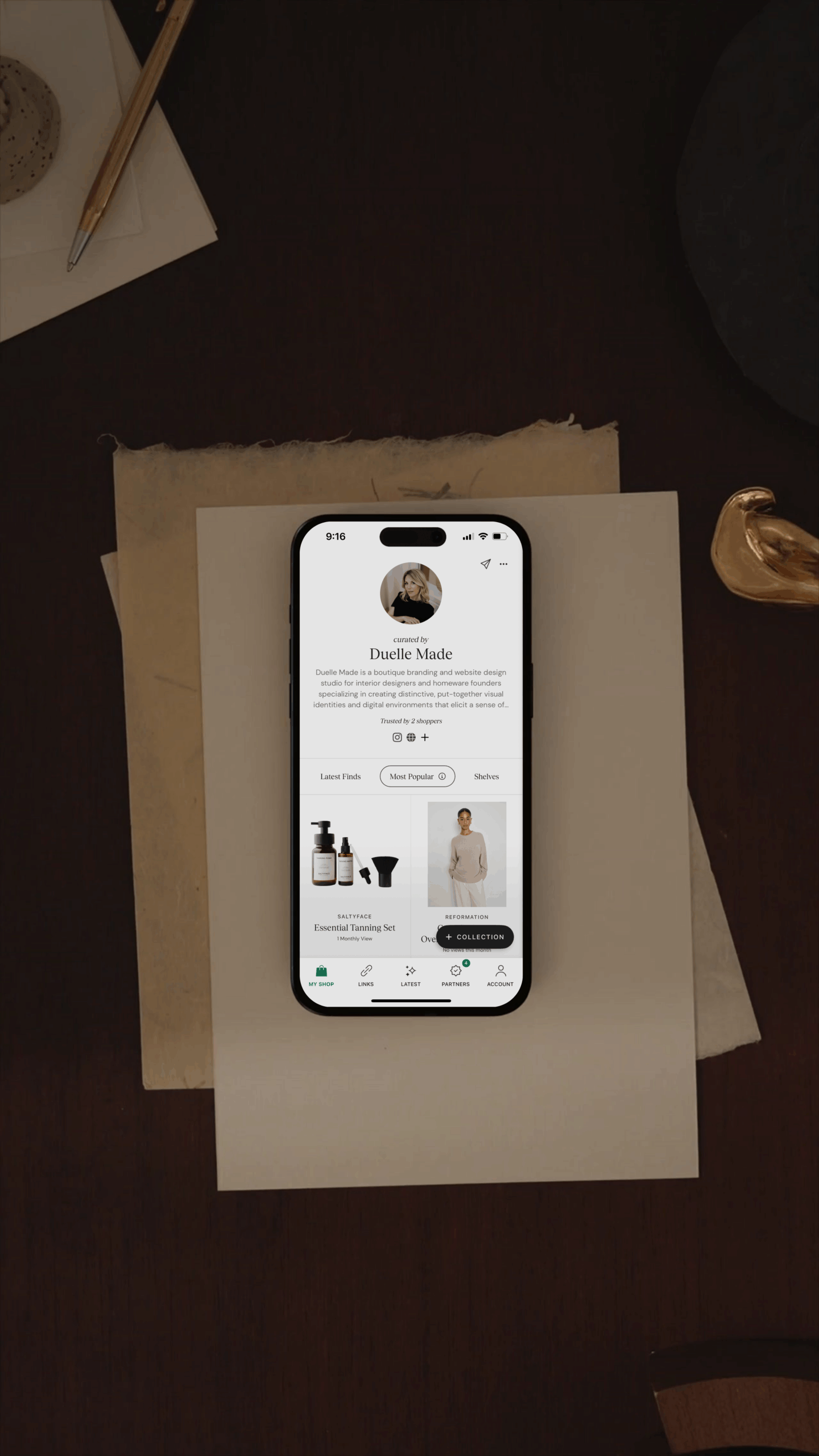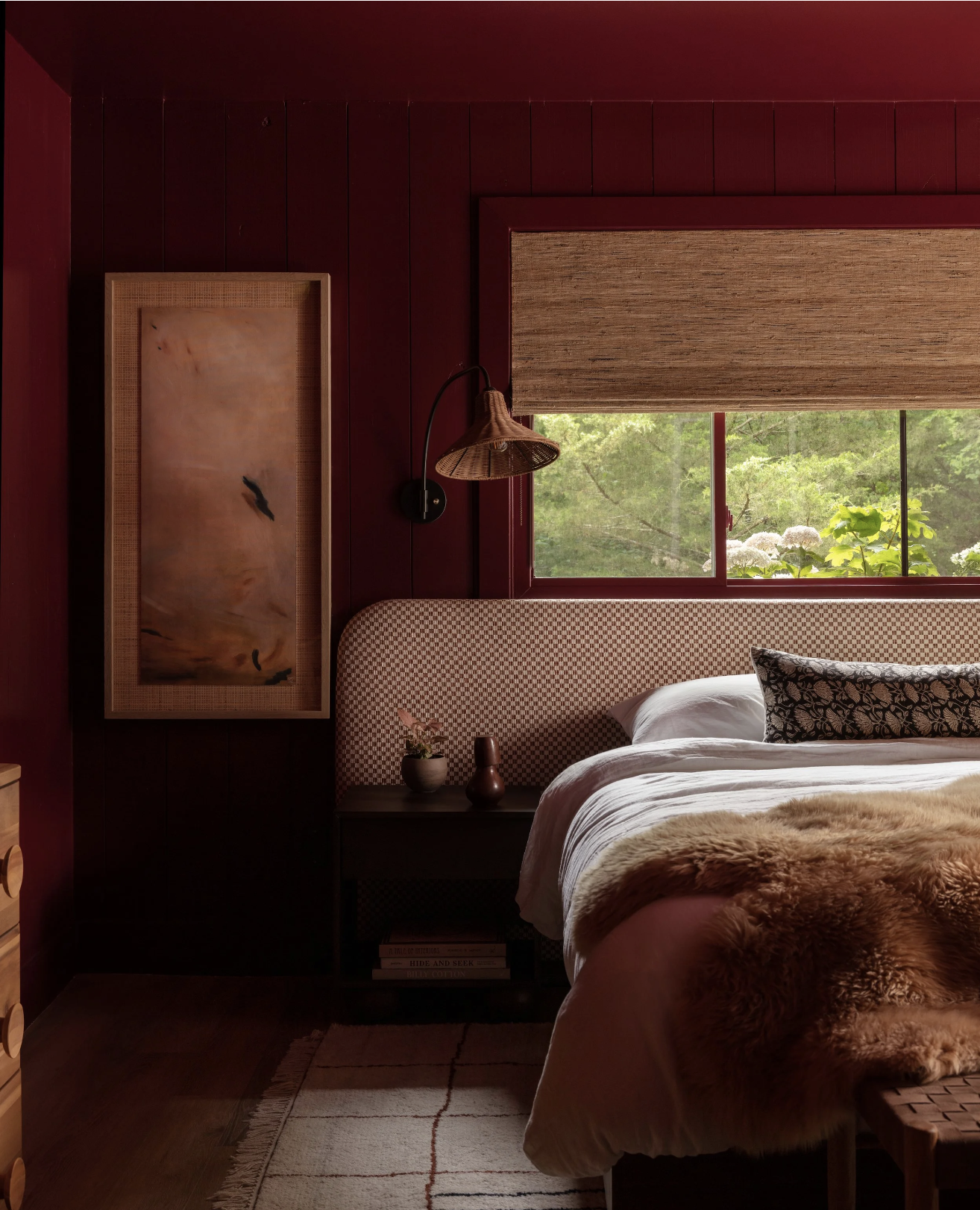The ebb and flow of home design work is part of the job. But it doesn’t make those quieter months any easier.
What if there was a natural way to supplement your income – without having to say “yes” to every inquiry that comes through?
That’s where affiliate marketing comes in – a revenue stream that works alongside your design business, not against it.
I recently sat down with Karla Diaz of Karla Home Style to learn more about her journey with affiliate marketing and get her advice for designers exploring this path.
What struck me wasn’t just her success – it was how naturally affiliate marketing evolved from her love of design and genuine desire to connect with her community.
So whether you have 1,000 followers or 30,000, affiliate marketing can become a sensible addition to your business strategy. This interview with Karla offers the clarity and confidence to begin in a thoughtful, authentic way.
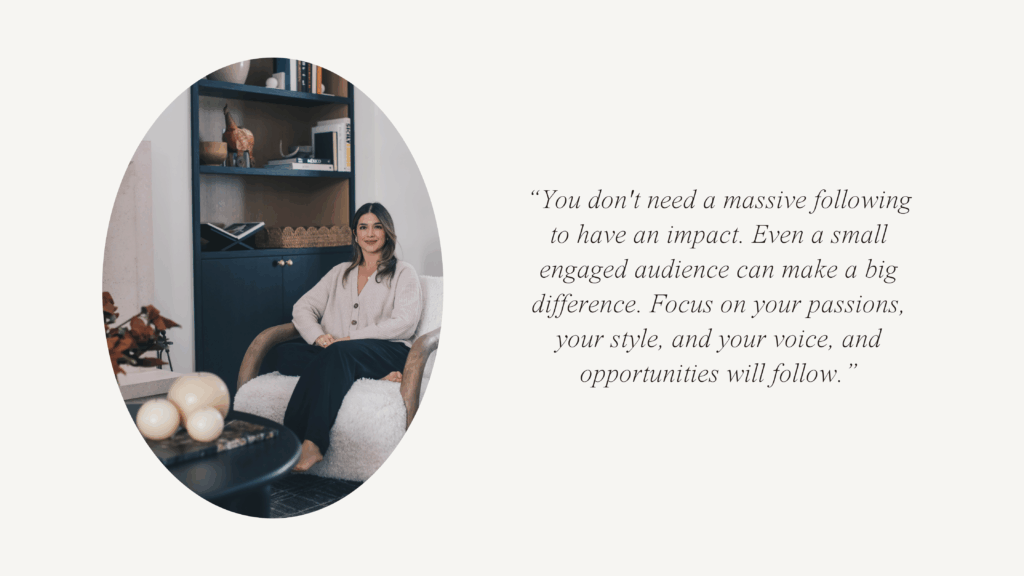
Getting Started With Affiliate Marketing
How did you first get into affiliate marketing? What made you think, “Okay, maybe I should give this a go”?
Honestly, when I started my account, affiliate marketing wasn’t something I jumped into right away. My background is really rooted in design and creating spaces I love.
Over time, I started sharing more of my own home, style, and lifestyle. Naturally, people would ask where something was from, and I loved being able to share those details.
I’ve always been mindful about how I recommend things. I only feel comfortable talking about pieces I actually own or use and truly love. That’s when affiliate marketing started making sense to me. It felt like connecting with my community in a helpful, authentic way while also supporting the work I was already doing.
What inspired your thoughtful, authentic approach?
I paid close attention to who I was following and why. The answer was always the same: I love their content because it felt so authentic, no matter their niche. Nothing about it was forced, and that’s what really drew me in.
That inspired me to approach my content in the same way. I want people to feel that sense of ease and trust when they come to my page.
Even now, I continue to admire and be inspired by creators who stay true to themselves – the ones who show up consistently, share what they genuinely love, and let their personality shine through. It’s a reminder for me to always keep authenticity at the heart of what I do.
What’s something you wish you’d known sooner?
To be patient and trust the process. Affiliate marketing takes time to learn and figure out what works for your audience, and it’s okay to make mistakes along the way.
Also, sharing products you truly love and using your voice makes all the difference in building trust and long-term success.
I know there are designers out there who think, “This could never be me. I’m not an influencer.” What would you tell them?
I’d tell them that being an influencer isn’t about fitting a certain mold. It’s about sharing what you genuinely love and creating content that feels authentic to you.
You don’t need a massive following to have an impact. Even a small engaged audience can make a big difference. Focus on your passions, your style, and your voice, and opportunities will follow.
Affiliate Marketing Strategy
You’re on LTK more than ShopMy. What do you love about it and why?
I work mainly with LTK, even though I recently created a ShopMy account. With LTK, it definitely took me a little time to get the hang of things. But once I did, it became second nature.
Over time, I’ve found great success with it, not only on the affiliate marketing side, but also with brand partnerships, which has been such a great extension of what I do.
That being said, I’ve heard amazing things about ShopMy as well, and I’m excited to start using it more soon. It’s always good to diversify and explore different platforms. But LTK has definitely been the one I’ve built most of my experience with.
*Keep in mind that most platforms require an application, so don’t be discouraged if approval takes time.

How do you secure brand partnerships?
When you’re consistently creating content and genuinely providing value to your audience, brands often start coming to you naturally, which is where I’m at right now.
But when I was starting out, I had a list of dream brands that fit my niche and aligned with the things I love to share. So I put together a media kit and got really confident when crafting thoughtful pitch emails. Of course I received a lot of nos along the way, but I also got a lot of yeses, and those early wins helped me build momentum.
One thing I continue to do to this day is organically engage with brands I admire. Whether that’s interacting with their content, tagging them when appropriate, or genuinely showing my appreciation for their products, it helps put you on their radar and signals that you truly value what they do. Then when you do send a pitch email, it’s much easier for them to see your interest, because it’s authentic and backed by consistent engagement.
You mentioned a media kit. Would you say it’s important to your success?
It’s super important! It gives brands a clear snapshot of who I am, the type of content I create, and the audience I reach, which helps them quickly understand the value I can bring to a partnership.
I make sure to include things the brand actually cares about, which are my audience demographics, engagement metrics, examples of past collaborations, and a bit about my aesthetic and content style.
I also like to highlight the types of partnerships I’m open to and what makes my approach unique. The goal is to make it easy for a brand to see how a collaboration could work and why it would feel authentic to both my audience and theirs.
What’s your strategy for paid partnerships?
I focus mainly on paid partnerships and rarely accept gifted products. When you have a solid community, brands should see the value in that and compensate fairly.
I think it’s important for creators to know their worth and consider the full scope they’re providing, from creative work to production to audience reach and engagement. Do your research, understand industry standards, and don’t ever undervalue your time or influence.
That said, if you’re just starting out, or if you truly love a brand and their product, accepting a gifted collaboration can be valuable to build a relationship. Even then, it’s important to be selective and thoughtful about the partnerships you take on.
Whether it’s gifted or paid, I always make sure the collaboration feels fair and the brand’s values, messaging, and objectives align with mine.
One of our followers asked: “How do I know when/how often to reach out to potential brands? This is part of our revenue and it’s hard to determine how much time to spend.” What would your advice be?
It really depends on how much time you can dedicate to it. If this is your full-time job, I’d recommend reaching out to at least 10 brands a week.
Treat it like a business. The effort and consistency you put in will directly impact the results you see. Even if it’s part-time, setting aside regular time to research, pitch, and follow up with brands is key. The more intentional and consistent you are, the more opportunities you’ll create for yourself.
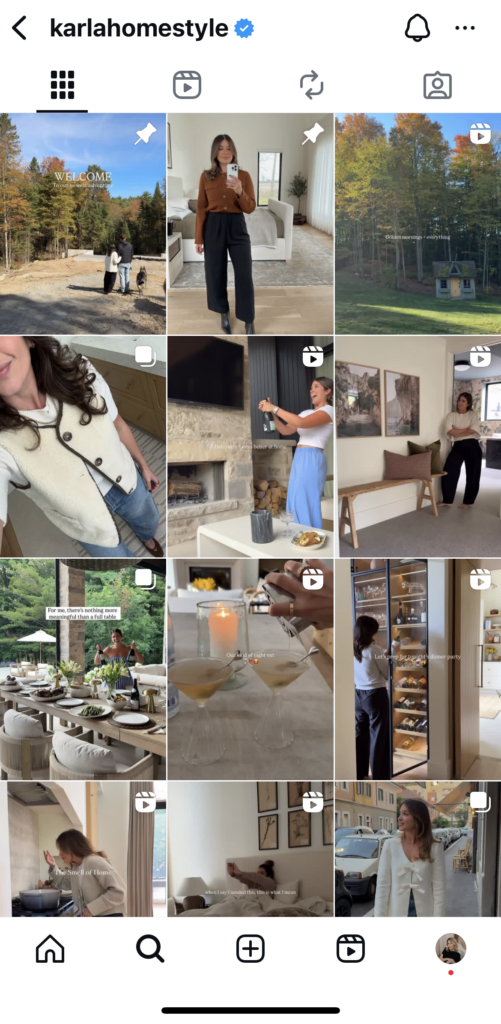
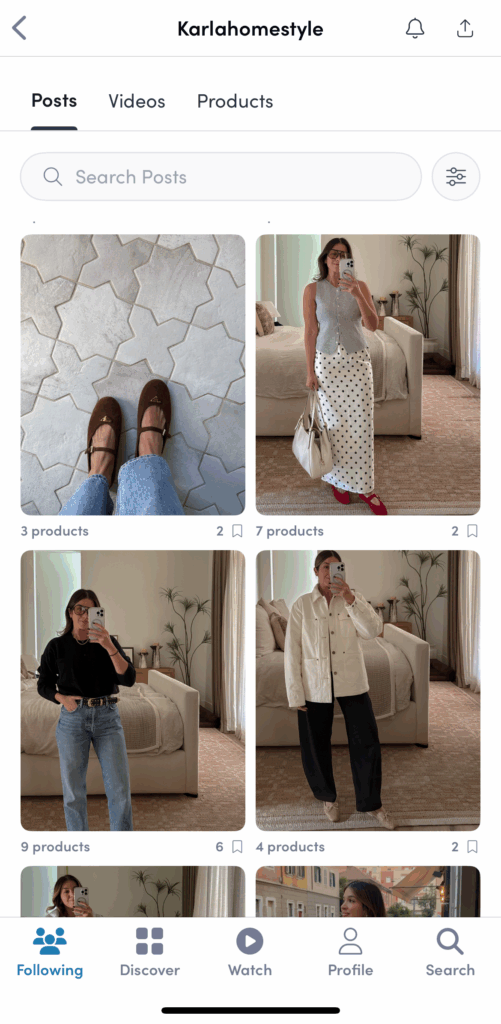
Creating an Experience
You’re so great at sharing affiliate products in a way that feels natural and unforced. How would you encourage designers to plan and share their affiliate content?
A lot of my content ideas come from moments in my own life, like styling a new corner of my home, discovering a new product I can’t live without, or even just sharing something that adds value to my followers’ routines.
I focus on why I love something, how I actually use it, and how it fits into a lifestyle or space that my audience can relate to. When the content feels genuine and helpful, it comes across as inspiration rather than salesy.
I also like to plan ideas ahead of time and shoot content in batches when possible. But I always leave room for spontaneity.
You switched from Linktree to an on-brand shopping page. What inspired that decision?
I made the switch because I wanted to better showcase what I can offer (whether that’s design work or affiliate links, etc.) in a way that felt intentional and on-brand.
Instead of sending my followers to a generic link, I can guide them to a beautifully organized, easy-to-navigate page that reflects my aesthetic.
Since making the switch, I’ve noticed conversions have improved, and it’s easier for my audience to find what they’re looking for or even just reach out to me, which makes the experience feel seamless and enjoyable.
Overcoming Common Challenges
Is there a learning moment that stands out to you from your early days in affiliate marketing?
One that sticks out is when I first started pitching brands. I got a YES on a collaboration before I fully understood what they wanted or how to execute it. I ended up overcomplicating the content and feeling stressed, and the result didn’t really showcase either of us in the way I’d hoped.
It was a good lesson in setting clear expectations upfront, asking the right questions, and remembering that simplicity and authenticity always resonate more than overthinking. I think every creator has those early moments, and they’re just part of learning the ropes.
How do you keep your affiliate marketing efforts organized and make sure things are working?
I signed with an agency about two years ago, and my manager now handles all my brand partnerships, from negotiations to communicating with brands to managing the schedule. That allows me to focus on the creative side and execution, which is amazing, and I’m so grateful to have such a supportive team.
When I first started out though, I treated it like any other job. I set aside dedicated time to pitch myself, respond to brands, and create/edit content. Staying organized is key, using calendars, lists, and batching tasks really helps keep everything manageable.
You have to be intentional about your time because there’s a lot to juggle when you’re building partnerships and producing content consistently.
As for tracking results, I rely a lot on Instagram analytics to see detailed performance metrics, which really helps me understand what resonates with my audience. LTK also has fantastic insights, so I can track which products and posts are performing well and which aren’t. Between the two, I get a clear picture of what’s working and can adjust my content strategy accordingly.
Closing Thoughts
What’s one thing that would surprise people the most about affiliate marketing?
How much relationship building and strategy goes into it.
It’s not just about sharing links. The most successful affiliate marketing comes from creating content that feels authentic, knowing your audience, and cultivating genuine relationships with brands. The behind-the-scenes work is just as important as the posts themselves.
________
Explore ShopMy and LTK for inspiration, and see how other designers are creating shoppable experiences that feel true to who they are.
Take it slow. Stay true to yourself. And see where the journey leads you.
